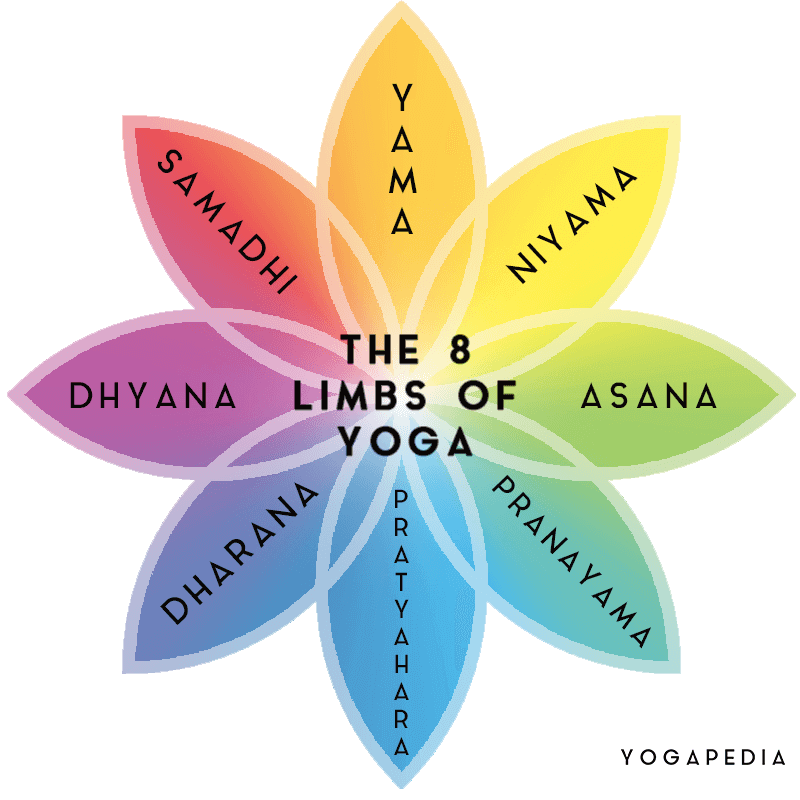The game of our life is often like a house that we need to continually take care of. Day in and day out, we clean, work, move, assimilate, digest, rest, and then start all over again.
Within each of us is a tiny microcosm, or reflection, of all that is around us. And we have the opportunity to build and care for our lives just as we would a house.
When you build a house, first you must have a solid foundation. The ground must be steady upon which to build. Then the physical manifestation of the house is created when the flooring is poured and the support beams installed. Before the roofing and walls are attached however, there needs to be a way to connect everything.
These may be small details, but they should not be overlooked. Without the connection points in the design, the house will crumble.
We can look at this as a metaphor for the role of the fifth limb of Ashtanga yoga: pratyahara.
Pratyahara is the gateway between the first four limbs of yoga known as bahiranga yoga: he physical pursuits. These are yama, niyama, asana, and pranayama.

The last three limbs, dharana, dhyana, and samadhi, are classified under antaranga yoga: the internal pursuits.
Not only is pratyahara the gateway through which the external, manifested world flows into the internal, unmanifested world, but it is also a deep connection point that without it, all will be fruitless on the pathway toward samadhi.
“Sva vishaya asamprayoge chittasya svarupe anukarah iva indriyanam pratyaharah”
-Yoga Sutra 2.54
When the mind is disconnected from the five sense organs, pratyahara occurs.
The Sense Organs
The five sense organs, namely eyes, ears, tongue, skin, and nose, cannot be withdrawn themselves. The goal of pratyahara is to withdraw or disconnect the citta, or consciousness/mind, from the sense organs themselves.
The five sense organs act as a filter through which we experience the world on a daily basis. This then determines our actions, likes, dislikes, habits, and so on.
When the five sense organs are disconnected from the citta, then consciousness remains undisturbed for the further limbs of yoga to unfold.
Focusing Inward
The external world is like a centrifuge, governed by the centrifugal force that is constantly moving dense objects away from the center in a sorting process. By following the outside current, one will remain distracted.
Thus, just like if you follow the lighter particles that moved inward during the centrifugal process rather than the ones outward, it will enable you to redirect your consciousness inward toward the path of samadhi.
It is only through this deep connection that you can then inhabit the house of your life. Once the house is built, you then have a safe space from which to withdraw from the external world and let consciousness rest without attachment.
For as long as there is attachment, there is ego, and this will cause suffering. The journey toward samadhi is to move beyond suffering.
The Ashtanga yoga system outlined by Patanjali is like a stepladder toward enlightenment. Without pratyahara, one cannot access the deep levels of concentration required by dharana or the depth of meditation during dhyana.
This further leads to the practice of samyama, where dharana and dhyana fuse with samadhi as they are practiced simultaneously.
How to Practice Pratyahara
So how do you begin to practice pratyahara? This practice is often overlooked and missed, to the point it is sometimes called “the least practiced yoga”. Pratyahara is such a powerful tool because it moves you into the witness zone.
You can simply observe the five sense organs without actually engaging with them. Thus, we regain greater control over our lives, thoughts, and actions.
The Sanskrit etymology of the word pratyahara translates to “take away from” (prati) and “food” (ahara). It may sound counterintuitive at first, but the goal is to find nourishment from internal sources rather than external ones.
The five sense organs act as gateways through which all sort of temptations can arise, so what happens when you stop paying attention to them?
Try This Exercise at Home to Practice Pratyahara
Find a quiet space in your house free of clutter where you can turn the lights out and close the curtains.
Sit comfortably on a cushion, lengthen your spine, and close your eyes. Take a few moments to settle in and relax your breath. Keep your body as still as possible.
Direct your focus toward only the eyes. The eyes + citta enables sight. Observe for a few moments.
Then move toward the ears. Ear + citta enables hearing. Observe.
Move to the tongue. The tongue + citta creates taste. Stay here for a few moments.
Focus on the skin. Skin + citta creates feeling. Observe here.
Finally, move onto the nose. The nose + citta creates the sense of smell. Observe here for a few moments.
As go one-by-one, take your time and really notice what it is like to only focus on the one sense organ at a time. When you withdraw from the other senses and only use one at a time, you may find the ability to move more inward after some time.
Pratyahara is a process that takes time and patience.
Think of this exercise and pratyahara like cleaning your house. Throw away the clutter of your mind, keep it neat and tidy and remember to dust weekly to avoid a buildup of cobwebs!
Step through the gateway of pratyahara to find your inner connection.
During These Times of Stress and Uncertainty Your Doshas May Be Unbalanced.
To help you bring attention to your doshas and to identify what your predominant dosha is, we created the following quiz.
Try not to stress over every question, but simply answer based off your intuition. After all, you know yourself better than anyone else.